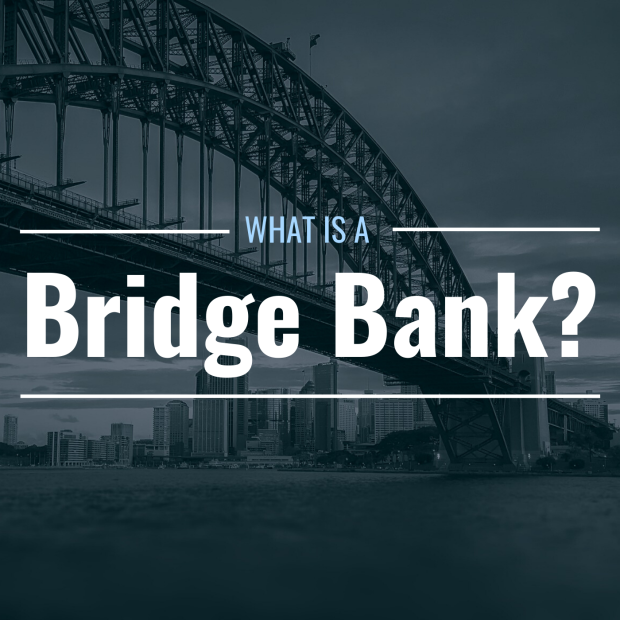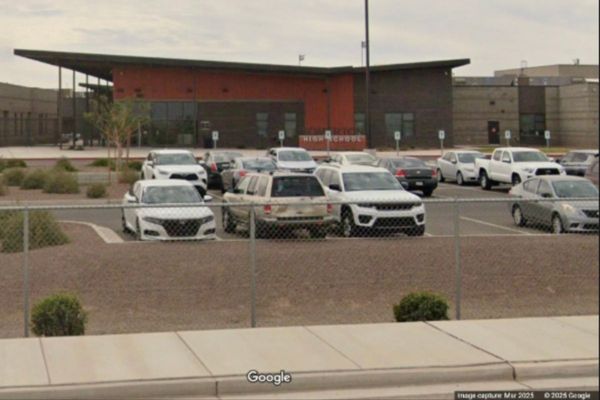
Walkerssk from pixabay; Canva
What is a bridge bank?
After a bank fails, it doesn’t just close up shop. In most cases, the moment a failed bank closes, its assets and liabilities are placed into state or federal receivership.
If it’s an FDIC-insured bank, and most U.S. banks are (check the FDIC's BankFind tool to see if yours is), customer deposits are protected via deposit insurance up to $250,000—and sometimes, even more. These failed banks enter the control of the FDIC.
As receiver, the FDIC manages an insolvent bank’s affairs and ensures that its vendors and counterparties continue to perform their contracts, but its most important role is to find a new buyer for the failed entity—or, in the case of a bankruptcy, to liquidate its assets through bankruptcy court.
The FDIC accomplishes this by setting up and supervising a bridge bank, which is a temporary bank chartered by the Office of the Comptroller of the Currency. A bridge bank allows the institution’s routine banking activities, like lending and deposits, to continue without interruption through this temporary period. The FDIC can operate a bridge bank for up to two years, although extensions of up to three years are possible.
Bridge banks play a critical role in reassuring depositors that their money is safe through transitional periods in the hopes of preventing bank runs and even greater financial contagion.
The FDIC assures the public that no one has ever lost money through a bridge bank.
Who owns a bridge bank?
A bridge bank is a nationally chartered bank that is controlled by the FDIC. Its board of directors, as well as its CEO, are appointed by the FDIC.
In 1987, the U.S. Congress authorized the FDIC to create bridge banks at its discretion through the Competitive Equity Banking Act, although bridge banks have existed since the Federal Deposit Insurance Act of 1950—they were just called “bridge depository institutions” back then. In 2008, Congress extended the FDIC’s mandate to include bridge banks for savings & loan institutions through the Housing and Recovery Act.
What does a bridge bank do?
A bridge bank ensures that the failed bank’s operations continue without interruption until its next phase of acquisition or liquidation. Some of its duties include:
- Providing retail services to customers
- Administering deposits and liabilities
- Servicing existing loans
- Purchasing and/or holding assets
- Paying off debts
- Performing other temporary functions
Bridge bank example: Silicon Valley Bridge Bank
On March 10, 2023, Silicon Valley Bank (SVB) failed, igniting the banking crisis of 2023. SVB was placed under the receivership of the FDIC, and a bridge bank called Silicon Valley Bridge Bank was created on March 13, 2023. Silicon Valley Bridge Bank was operational until First Citizens Bank announced its acquisition on March 26.
SVB funded nearly half of Silicon Valley’s tech and healthcare-related IPOs in 2022, assuming many risks in the process of becoming embroiled with this notoriously volatile sector. After a few years of unprecedented growth, SVB announced a $1.8 billion quarterly loss in March 2023, which was followed by a downgrade from credit ratings agencies. SVB’s panicked customers withdrew $42 billion in one day, sparking a bank run that would leave the company insolvent.
In an effort to restore confidence in the banking system, incredibly, the FDIC and the U.S. Treasury Department released a joint statement on March 12 guaranteeing depositors full access to all of their funds, even above the $250,000 insured limit.
Bridge bank example: Signature Bridge Bank
Less than 48 hours after the failure at Silicon Valley Bank, the New York State Department of Financial Services closed Signature Bank and placed it under FDIC receivership. Its deposits and assets were transferred to a new entity called Signature Bridge Bank. It was sold to New York Community Bancorp on March 20 and now operates under the Flagstar Bank subsidiary.
Signature Bank had catered to a niche audience of wealthy clients, including former President Donald Trump. It dealt with private real estate, private equity, and cryptocurrency and was being investigated by the U.S. Justice Department over its connection with the alleged fraud at Sam Bankman-Fried’s cryptocurrency exchange, FTX, in 2022.
Signature Bank reduced its cryptocurrency exposure and replaced its CEO, but that wasn’t enough to mollify customers, who demanded $10 billion of their deposits back on March 10.
In another joint statement, the Federal Reserve, the Treasury Department, and the FDIC said that Signature Bank was a threat to the entire financial system and that by closing it, they were keeping Americans safe. They also announced a new emergency lending service for troubled banks called the Bank Term Funding Program.







